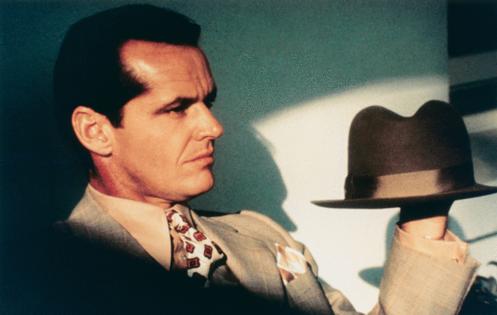Going high or low? Chicago film festivals 'Summer Camp' and 'Bleak Week' open on Sunday
Published in Entertainment News
CHICAGO — Right now at the movies, Tom Cruise, a Hawaiian island dweller and a genetic lab experiment from space are simultaneously agitating and reassuring millions with tales of apocalypse-thwarting derring-do (“Mission: Impossible - The Final Reckoning”) and a loving family in challenging circumstances (“Lilo & Stitch”). It’s good news for theater owners, and the perpetually challenged moviegoing tradition.
This is good news, too: We have a couple of eccentric film festivals opening this week in Chicago, designed to broaden our options and reexamine some movies past, launching the new month in this nervous breakdown of a year with some striking emotional/visual extremes, careening from darkness to giddy intensity in multiple genres.
“Summer Camp”
“Summer Camp” is what the Siskel Film Center calls its 10-film mini-festival of “extra-ness,” that adjective courtesy of director of programming Rebecca Fons. The series opens at 1:30 p.m., June 1 with “Written on the Wind,” director Douglas Sirk’s feverish Texas hotbed of repression and psychosexual yearning. A huge hit in 1956, coming off Sirk’s previous examples of brilliantly skeptical romantic artifice, this is a melodrama that turns “mambo” into a verb. Oscar winner Dorothy Malone, as the rabidly carnal oil heiress, not just figuratively but literally mambos her disapproving father into a fatal heart attack. It’s a great scene in a dozen ripe, contradictory ways. And that, for many, exemplifies the power of camp in the right filmmakers’ hands.
From there, the festival struts from a Bette Davis/Joan Crawford smackdown (“Whatever Happened to Baby Jane?” from 1962, directed by Robert Aldrich) to John Waters (“Female Trouble,” 1974, with Divine, of course) to a clever variety of titles ranging from 1933’s “King Kong” and “42nd Street” to the uniquely unhinged “Boom!” from 1968 and director Joseph Losey. “Boom!” may star Elizabeth Taylor and Richard Burton, but the real star, in my view, is the Tiziani label of Rome, whose wardrobe for Taylor is the stuff of waking nightmares.
The range of work on screen in “Summer Camp,” Fons hopes, supports the notion that camp has no fixed definition, only an appetite for life. She says she revisited Susan Sontag’s 1964 essay “Notes on Camp,” which she first devoured in college, for curation tips and as a historical sounding board for her own ideas about cinematic extra-ness.
“I’m always thinking about how movie audiences interact with what’s in front of them,” she says. “For me, camp means a celebration of self, of the extravagance of self. It can be expressed through fashion or just the outward expression of pure emotion, with no shame.”
Though it predates the Victorian era by centuries, “camp” as we now know it, though its definition remains an argument every time, has its roots in the queer Victorian usage of the word. (There’s a really good feature on this posted on the United Kingdom National Archive website.) In her essay, Sontag consciously downplayed camp’s political and queer aspects, and its sly revolt against the establishment. Its gradual mainstreaming meant something; it was serious business, in the spirit of outré flamboyance. She defined camp as “playful, anti-serious,” expressing a fundamentally comic or ironic worldview and “artifice as an ideal.”
“Bleak Week: Cinema of Despair”
Also starting June 1, “Bleak Week” at the Music Box Theatre takes things down a notch, while somehow taking it up, too. The festival moniker comes from the American Cinematheque in Hollywood, which has presented “Bleak Week” in a big, bittersweet way for four years running.
This year, several other art-house and repertory film organizations around the country are getting in on the downbeat, among them the Paris Theater in New York City and the Music Box in Chicago. The 12-film series took a couple of titles from the American Cinematheque’s past calendars, while programming the rest with the Cinematheque’s blessing. The result is a vivid, surprisingly varied range of bummers, both domestic and foreign, many of them exquisite in their stoic but not heartless dramatizations of a world out to get you, somehow, with forces of doom snaking through the narratives.
Some are Hollywood studio classics of the 1970s, such as director Roman Polanski’s “Chinatown” (1974) or, lesser-known but extraordinarily affecting, Jerry Schatzberg’s plaintive road movie “Scarecrow” (1973), pairing Gene Hackman with Al Pacino in a simple story of drifters with an idea to open a car wash. Simple idea, complex and remarkable performance detail: The film was shot in sequence, allowing Hackman and Pacino, actors and recently anointed stars, the time and rhythm to accommodate, however warily, each other’s working methods. It wasn’t a hit, but “Scarecrow” knew the score. The late Hackman frequently cited it as his most gratifying film experience.
Despair can be really funny, too, and the Coen brothers’ “A Serious Man” (2009) piles misfortune atop misfortune for a University of Minnesota mathematics professor (Michael Stuhlbarg), cuckolding him (Fred Melamed’s Sy Abelman is the most soothing bastard in modern American cinema) and eventually forcing him into a stern ethical dilemma around grading time, among other catastrophes. It’s the Coens’ best film, and yes, I’m not forgetting “No Country for Old Men,” the one everybody admires more because serial killer movies are easier than mordant comedies of unease.
“Bleak Week” spans the globe, with the infamously grotty late-night dare “In a Glass Cage” (1986) from Spain’s Agusti Villaronga and, from Japan, Akihiro Suzuki’s newly restored 1999 sexual odyssey “Looking for an Angel.” Greece’s Yorgos Lanthimos and his black-comic penchant for totalitarian nightmares are represented by “Dogtooth” (2009). The rest of the offerings fill out the slate’s idea of what bleak means to this director, and that one, and why despair comes in more than one shade of grey.
The Music Box has big expansion plans, recently announced, thanks to a $1.2 million community development grant from the City of Chicago. The Southport Avenue landmark is adding a 100-seat theater to complement its existing 700-seat auditorium and the 60-seater built a few years ago, located across from the concession counter. The third theater will replace two storefront units immediately south of the Music Box main entrance.
Managing director Ryan Oestreich says it’ll be a $2.6 million project overall, as the theater renovates its restrooms to double the capacity. Target completion date is summer 2026.
“We’re future-proofing ourselves,” he says, “because our audience is growing. The new screen will allow us to better juggle the two sides of our programming, the repertory side and the new releases.” “Bleak Week,” he says, is “an experiment. But if you play the same hand over and over again, does that help the cinema experience in Chicago? It does not.”
———
“Summer Camp,” June 1-30 at the Siskel Film Center, 164 N. State St.; siskelfilmcenter.org.
“Bleak Week: Cinema of Despair,” June 1-7, Music Box Theatre in conjunction with American Cinematheque, 3733 N. Southport Ave.; musicboxtheatre.com.
———
©2025 Chicago Tribune. Visit chicagotribune.com. Distributed by Tribune Content Agency, LLC.













Comments